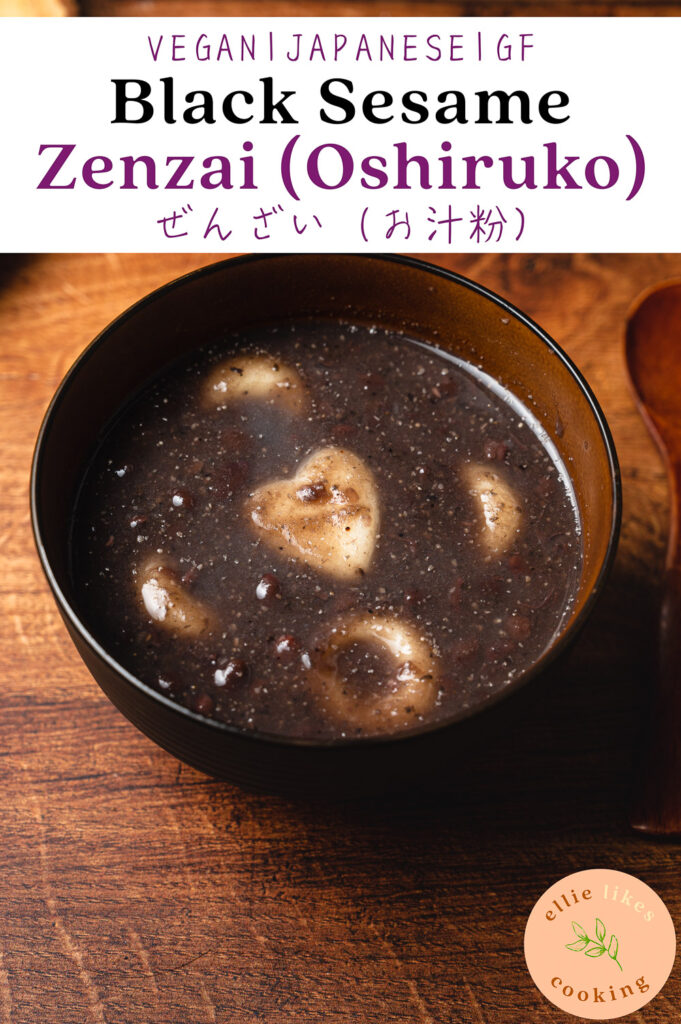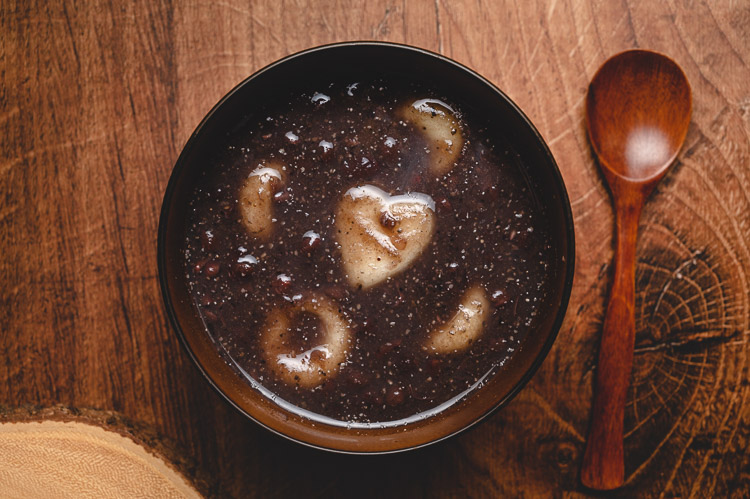Zenzai (or oshiruko) is a traditional Japanese sweet red bean soup. Take the comfort level up a notch with black sesame and homemade tofu dango!
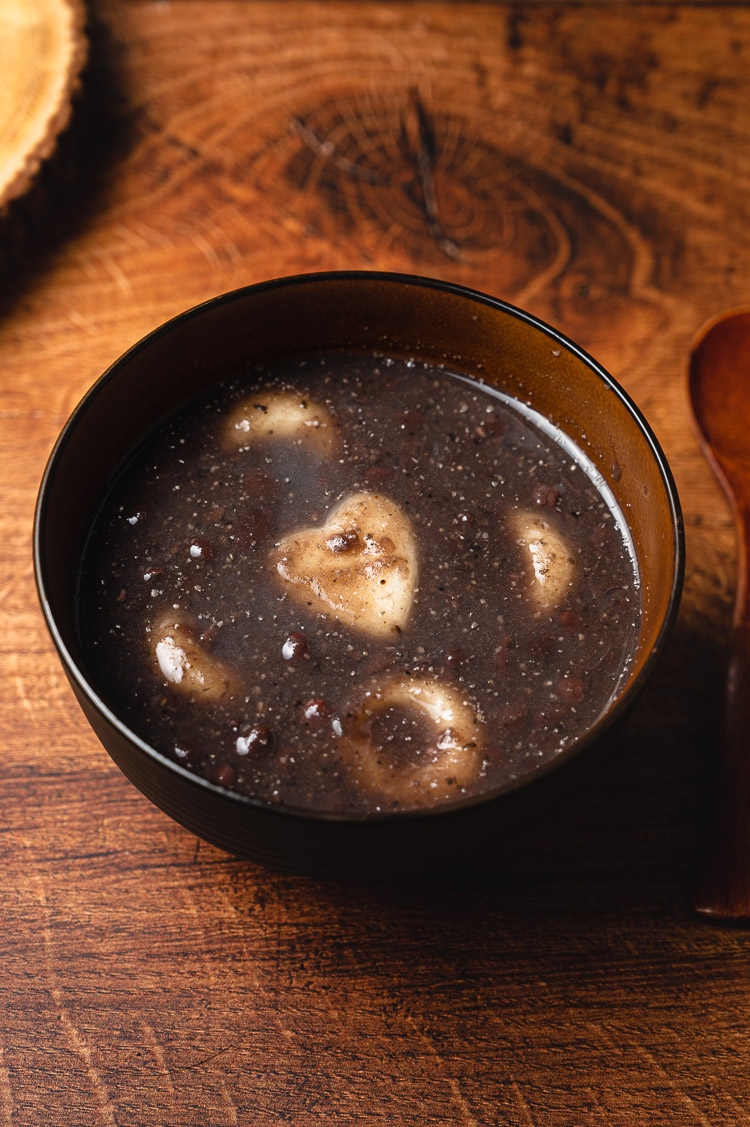
What is Zenzai?
Zenzai is a traditional Japanese dessert made by boiling azuki beans with sugar to make a soup. It usually contains mochi, dango, or candied chestnuts, though it can also be served plain. Since it’s a hot soup, it’s usually enjoyed in the wintertime but you can of course eat it year round. Some families will use their kagami mochi from New Years celebrations and eat it in zenzai or oshiruko. (The red color of azuki beans is thought to symbolize life and thus keep bad spirits away.) My family doesn’t have this tradition, but I think I may have to start it because I love zenzai (or really anything with anko)!
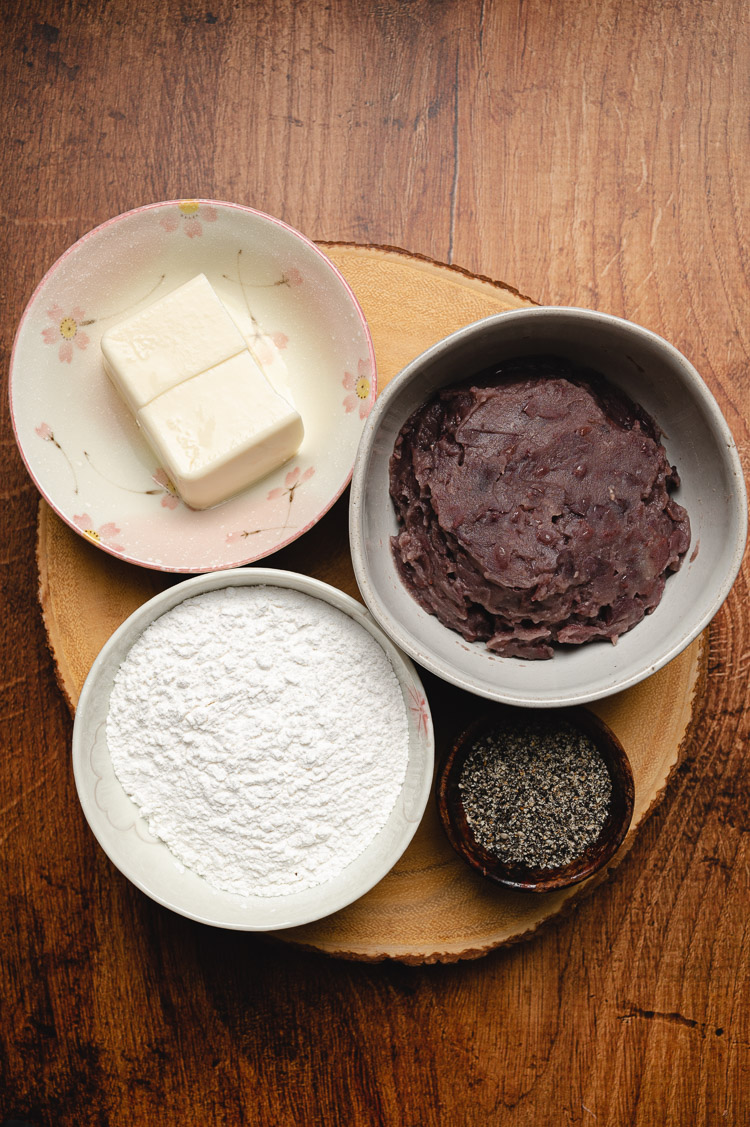


Ingredients
Basic zenzai is made with just 2 key ingredients: azuki beans and sugar! For this recipe, I decided to add black sesame (anko and black sesame are the perfect pair) and make my own dango with tofu. I’m also using leftover homemade anko to keep this recipe quick, though zenzai can be made from dried azuki beans cooked similarly to how you would prepare anko.
- Anko ⟶ I used homemade anko I made in my pressure cooker but you can also use store bought anko (they are often very sweet though).
- Ground Black Sesame Seeds ⟶ Japanese stores usually sell surigoma which are pre-ground sesame seeds. I buy them for convenience but you can absolutely grind your own sesame seeds (toast them for a minute to really bring out their nuttiness). You can use white sesame seeds if you can’t find black, but I absolutely love the flavor of black sesame.
- Silken Tofu ⟶ Silken tofu makes the dango just slightly more firm, so it has a bit more of a bite to it. But you can make dango with just water or even soy milk if you’d like.
- Shiratamako* or Mochiko* (Glutinous Rice Flour) ⟶ I recommend shiratamako if you can find it. Shiratamko is made by grinding the rice in water then drying the resulting precipitate. This process removes a lot of the starch in the rice, so dango made with shiratamako stays soft and chewy even when refrigerated.
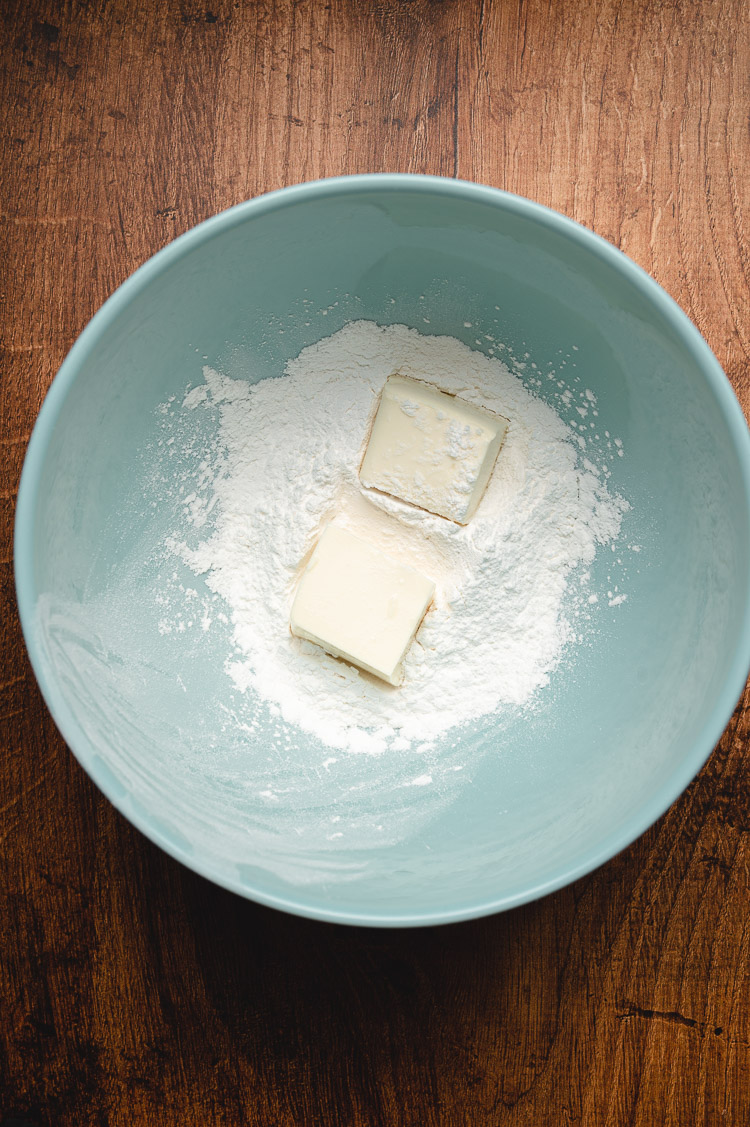


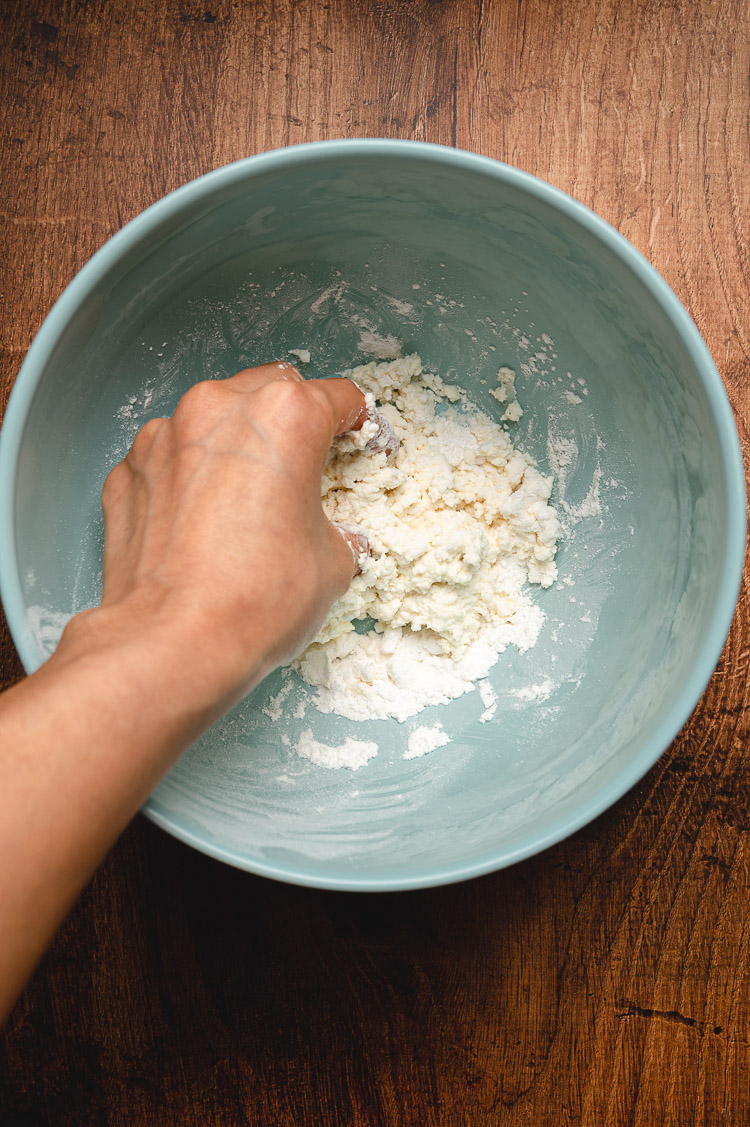


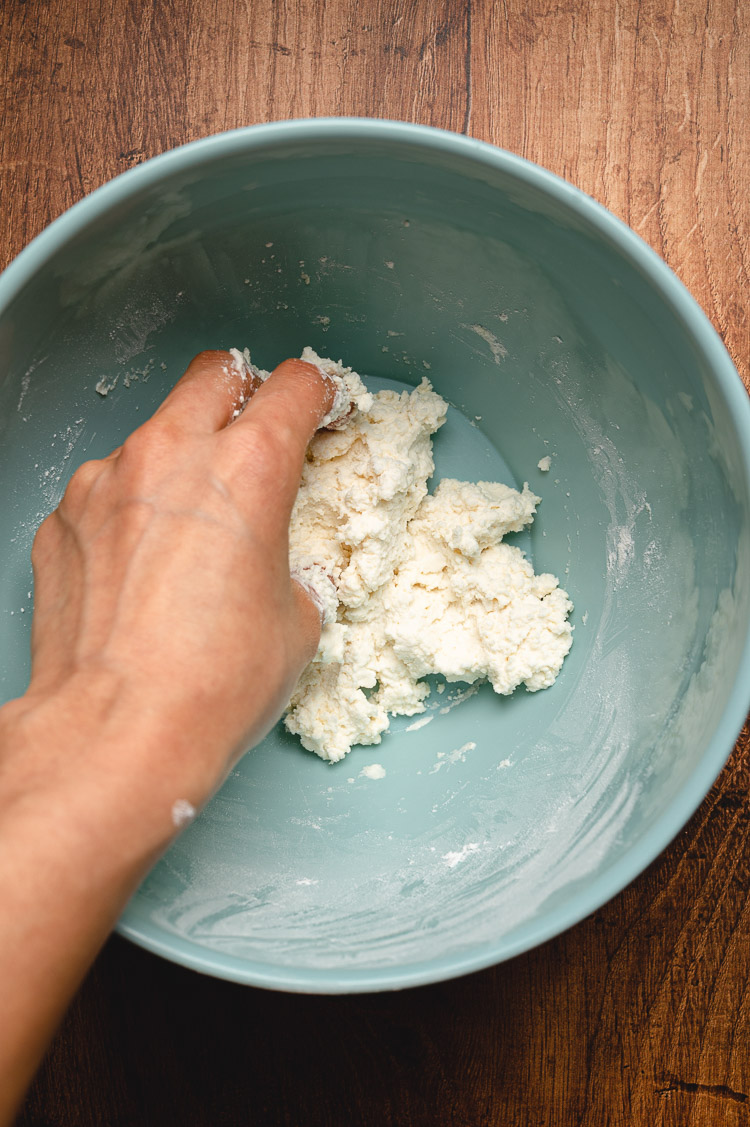


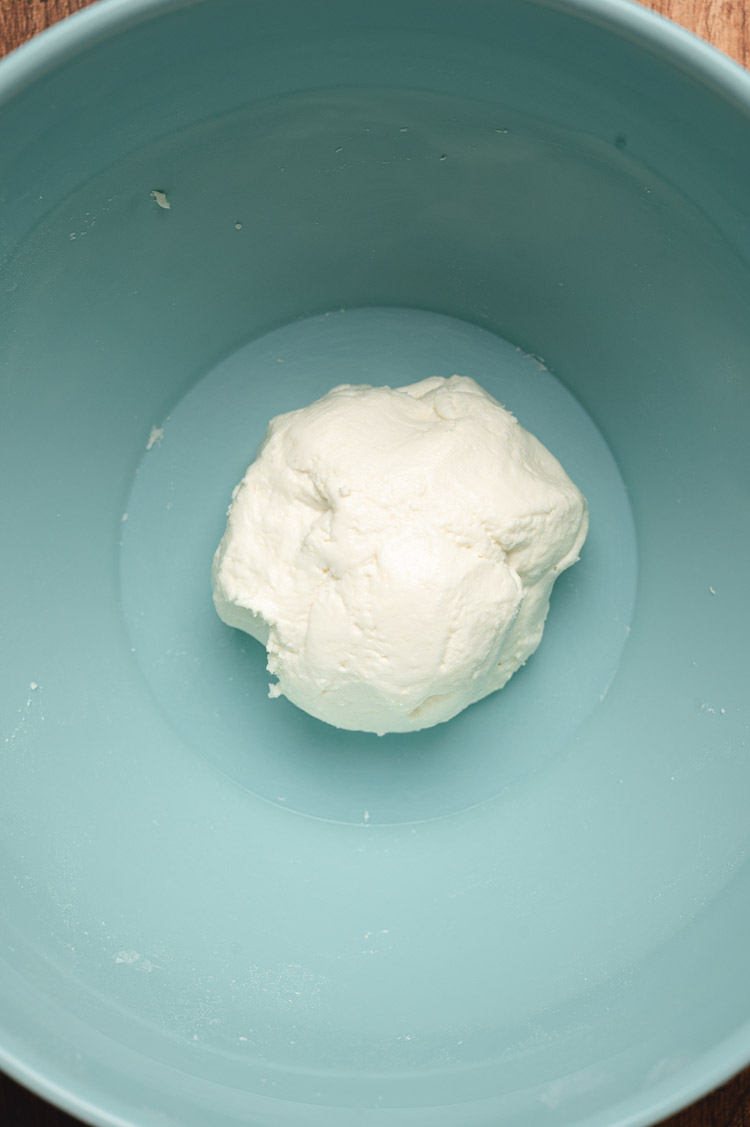


How to Make Tofu Dango
- Use your hands to crumble the tofu into the flour. Keep mixing and pressing the mixture together to form a ball. Roll the ball around your bowl to pick up all the crumbs.
- The dough will be quite wet at first and stick to your fingers, but just keep mixing. As the flour absorbs the liquid it will get less sticky, and you should be able to touch it without dough sticking to your hands. If your dough is still very wet after mixing for a minute, add flour one teaspoon at a time.
- Knead until it reaches the texture of an earlobe. Do your best to smooth out any chunks of tofu.
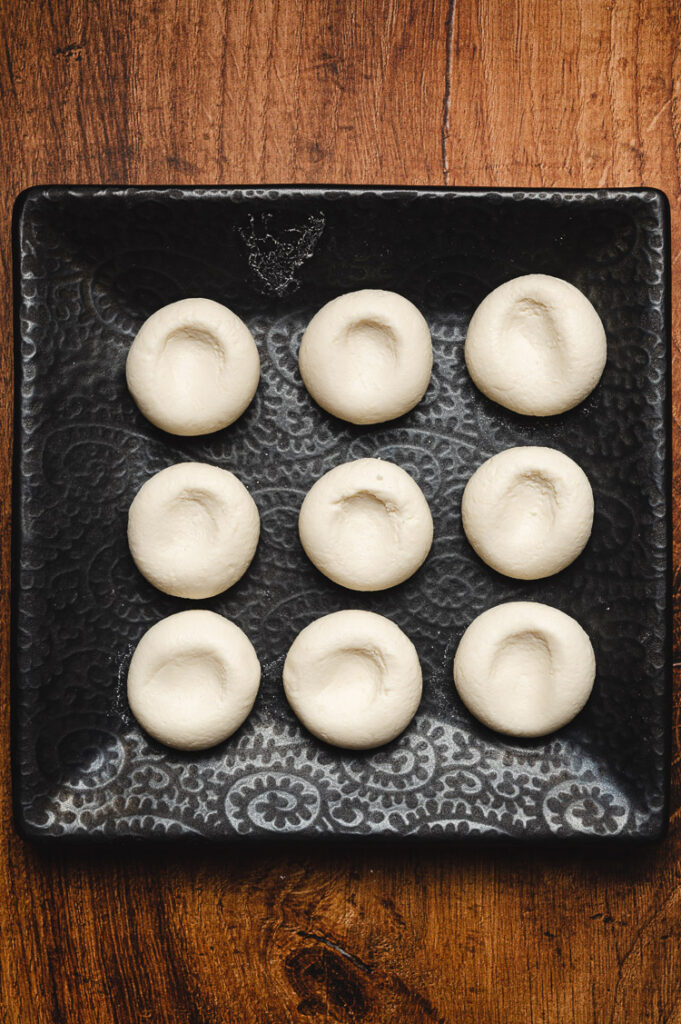


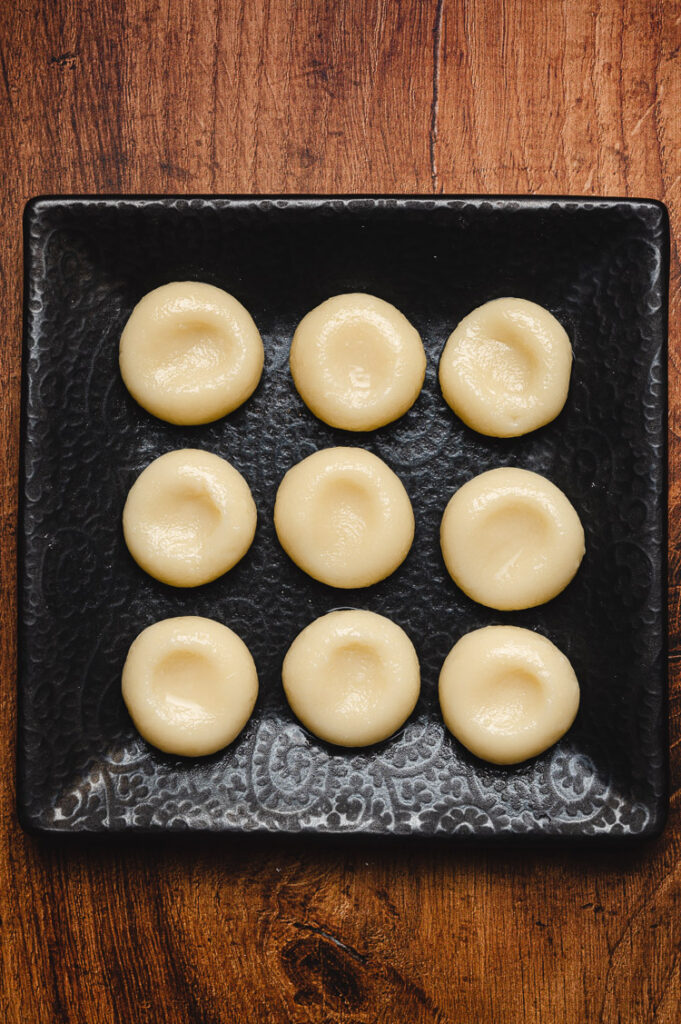


- Shape dango: Pinch off 1-2 tbsp size of dough and roll into a ball. Gently press down in the center with your index finger to make an indentation. (This helps the mochi cook more evenly. It also traps some of the soup in it like a tiny bowl!)
- Cook dango: Bring a pot of water to a boil. Add dango (cook in batches if necessary, don’t overcrowd the pot). The dango will float to the surface when cooked.
- Cool dango: Place dango in ice water to cool and prevent further cooking.
- Dango should be eaten the day it’s made as its texture will deteriorate over time. However, if you end up with too much dango, you can store them in water in the fridge for about 2 days.
- You can also freeze them for longer storage. To freeze, line a freezer-safe tray with plastic wrap. Drain off excess water from the dango, and place each dango on the tray spaced apart. The dango will stick to each other if they’re touching. Place in the freezer overnight. Once the dango are completely frozen, transfer them to a freezer-safe bag (they can be touching now that they’re frozen). They should last about a month in the freezer.
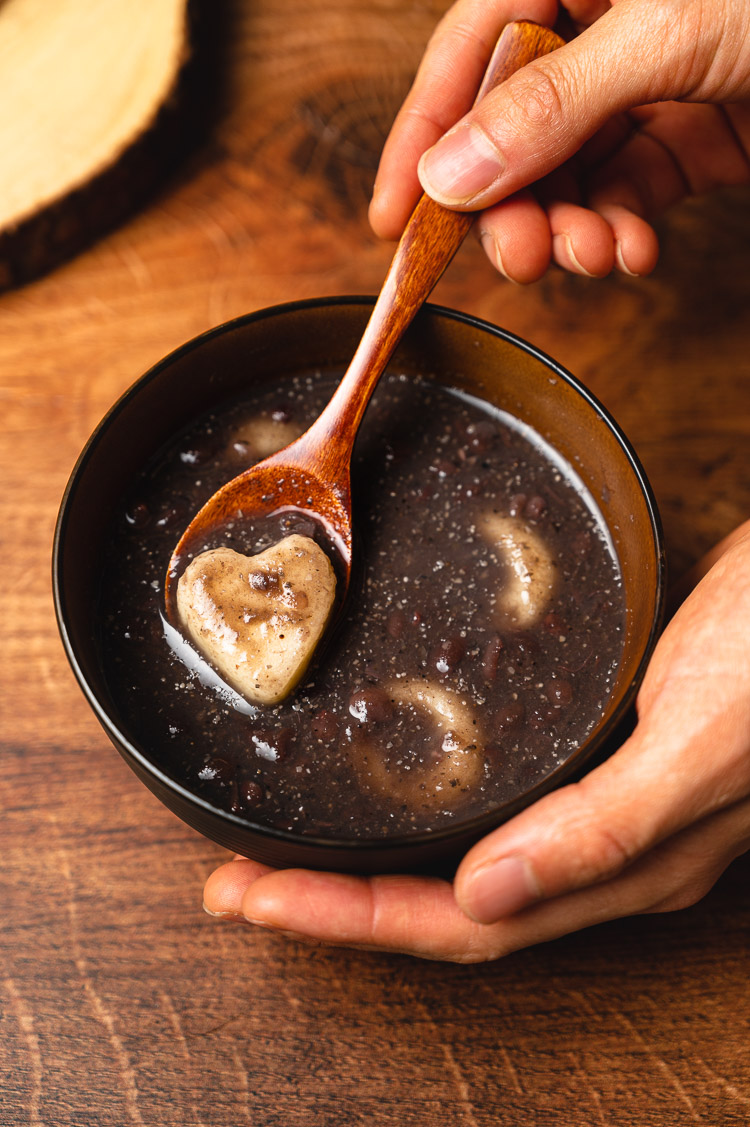


What’s the difference between Zenzai and Oshiruko?
Zenzai (ぜんざい) and oshiruko (お汁粉) are basically the same dish but may go by different names depending on how it’s prepared and what region of Japan you are in.
Zenzai ぜんざい
Zenzai is typically more chunky and contains whole azuki beans. It can be made from tsubu-an (chunky red bean paste) or from scratch using dried azuki beans. In Eastern Japan, zenzai usually has very little liquid. In Western Japan, zenzai can be soupy like oshiruko but will contain whole beans.
Oshiruko お汁粉
In general, oshiruko is more soupy and smooth, usually made with koshi-an (smooth red bean paste). In Eastern Japan, oshiruko may be made from koshi-an or tsubu-an (chunky red bean paste). In Western Japan, oshiruko usually refers to soup made from koshi-an.
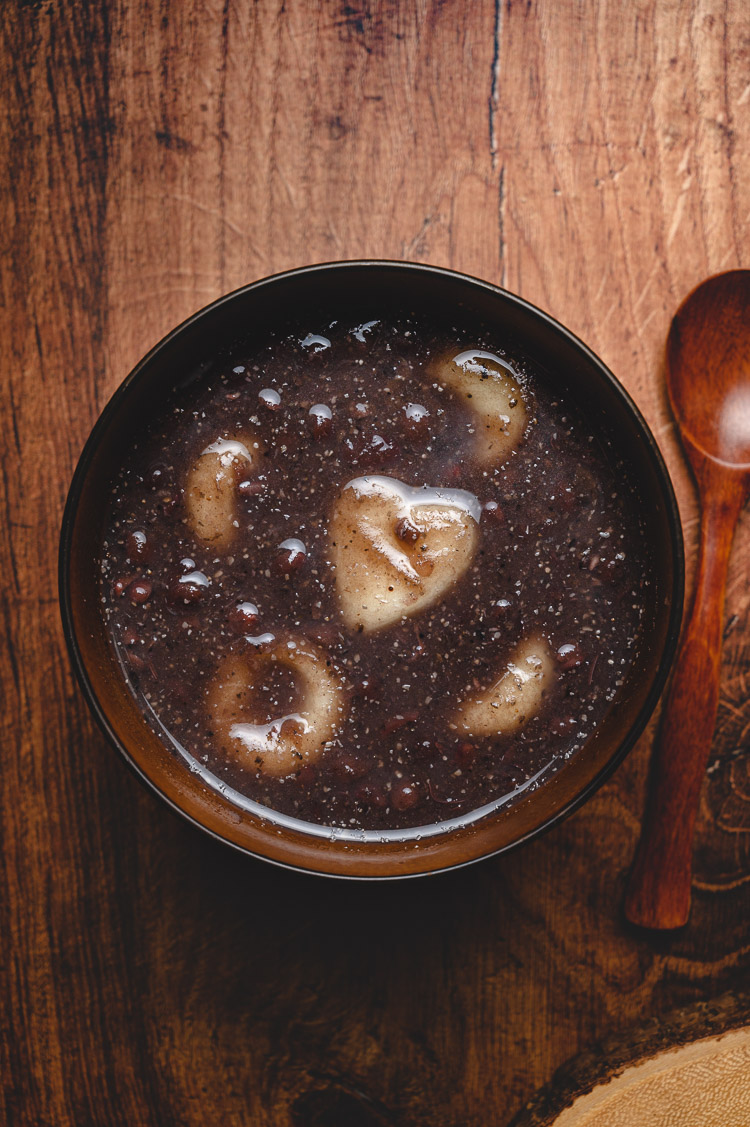


Tips for Success
Serve immediately ⟶ The dango will harden the longer it sits, so it’s best to eat it within 30 minutes of making it. You can save leftovers and reheat on the stove, but the consistency and texture of the dango is best freshly made.
Freeze portions of anko for last minute dessert! ⟶ I like to make a big batch of anko then freeze 1/2 cup portions so I have some on hand when I want to make zenzai or anpan. Anko will last about 2 months in the freezer. You can add frozen anko directly to a saucepan with water to make zenzai, no thawing necessary.
Flavor variations ⟶ Not traditional, but you can try swapping the water for soy milk, coconut milk, or another plant milk of choice for a creamier soup. Or you could even try matcha!
Serve with matcha or another bitter tea ⟶ The sweetness of the zenzai pairs perfectly with a bitter tea (no need to add milk or sugar).
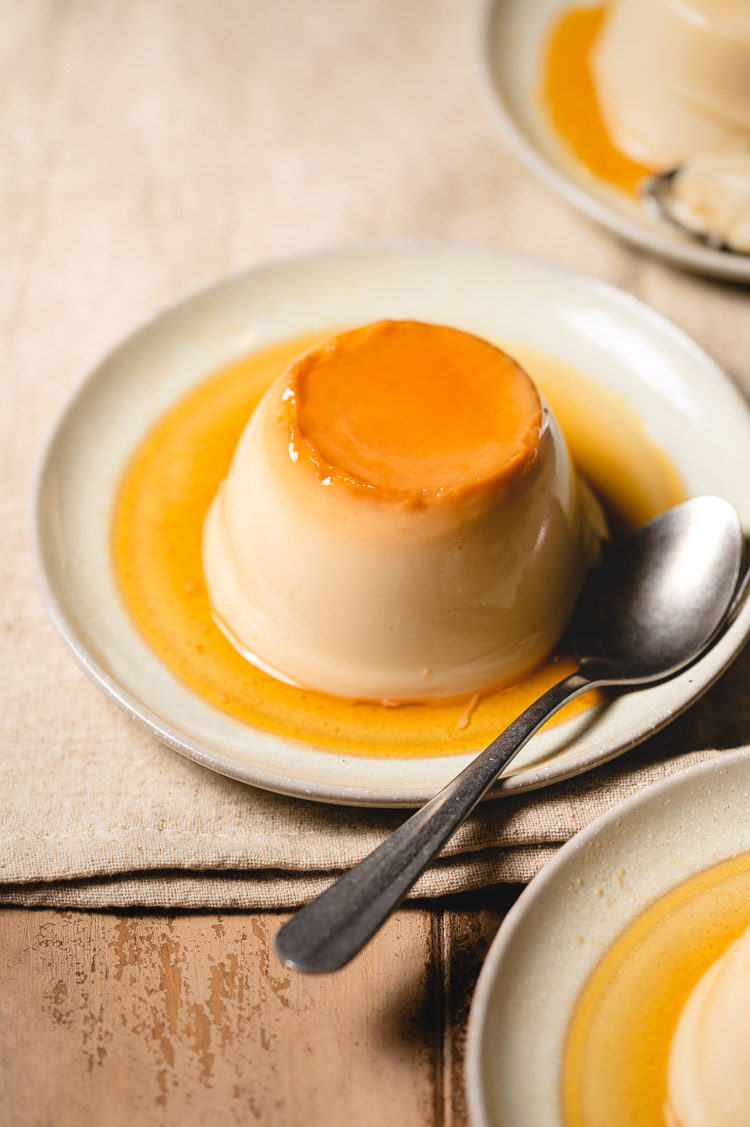


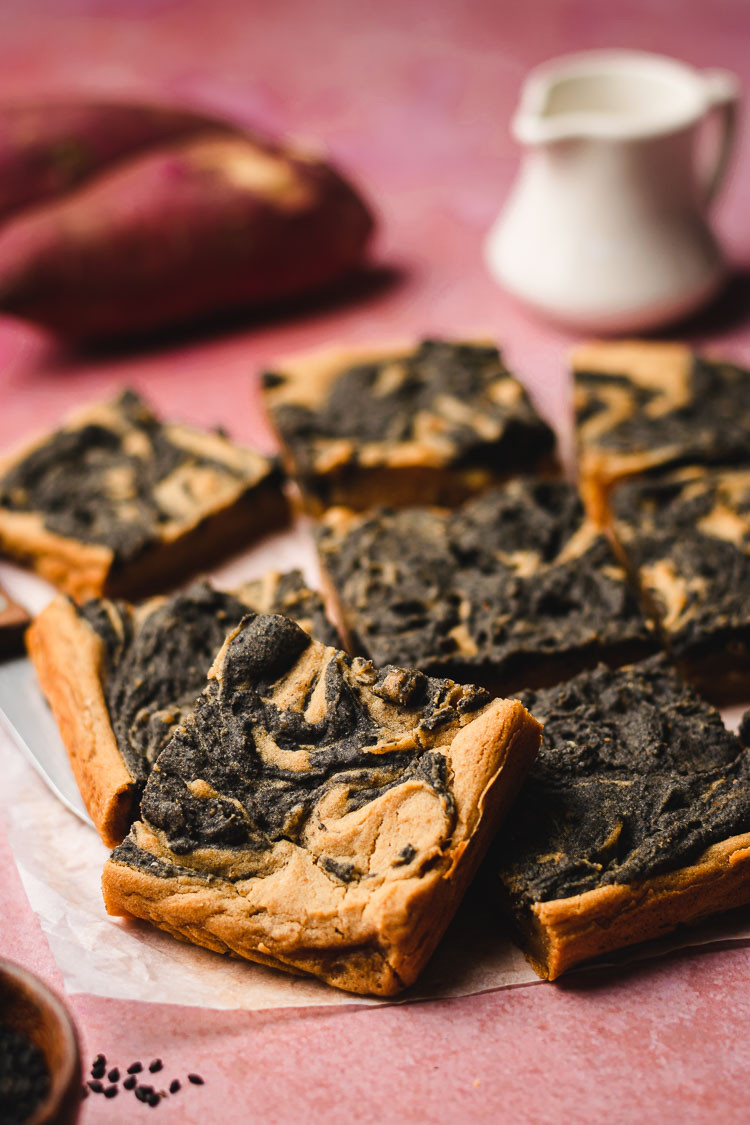





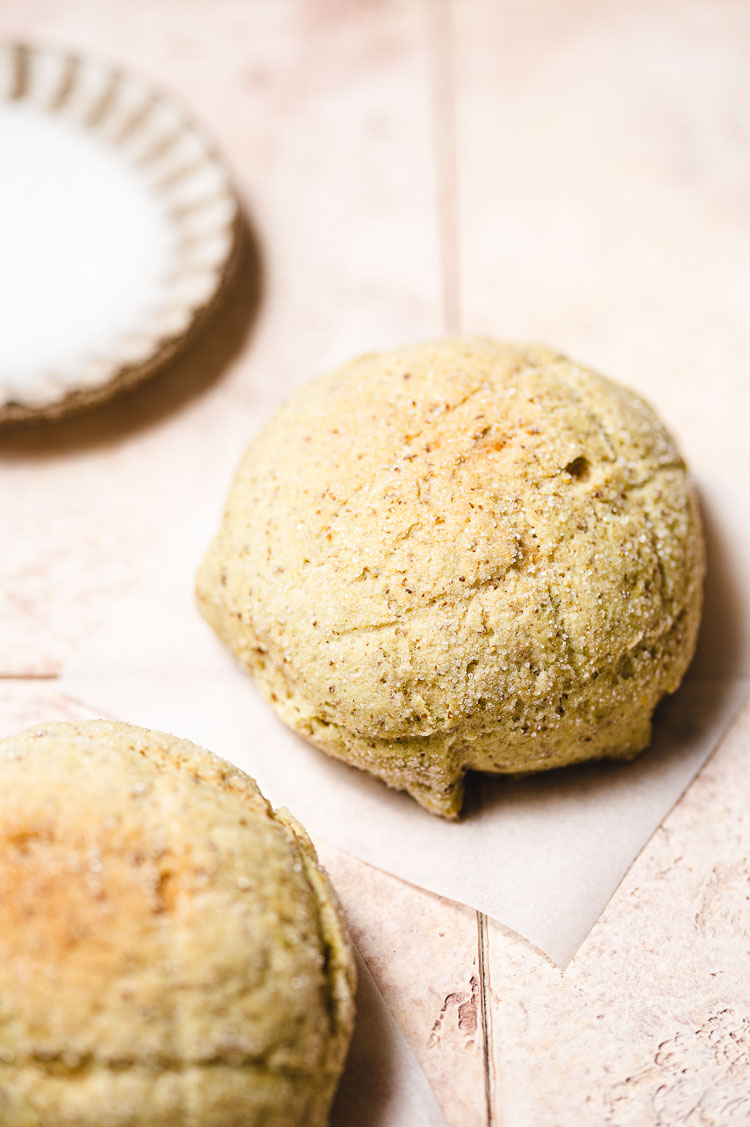


More Japanese Sweets to Try!
- Tofu Purin 豆腐プリン
- Sweet Potato Mochi Cake
- Japanese-Style Strawberry Chocolate Parfait
- Vegan Melon Pan メロンパン
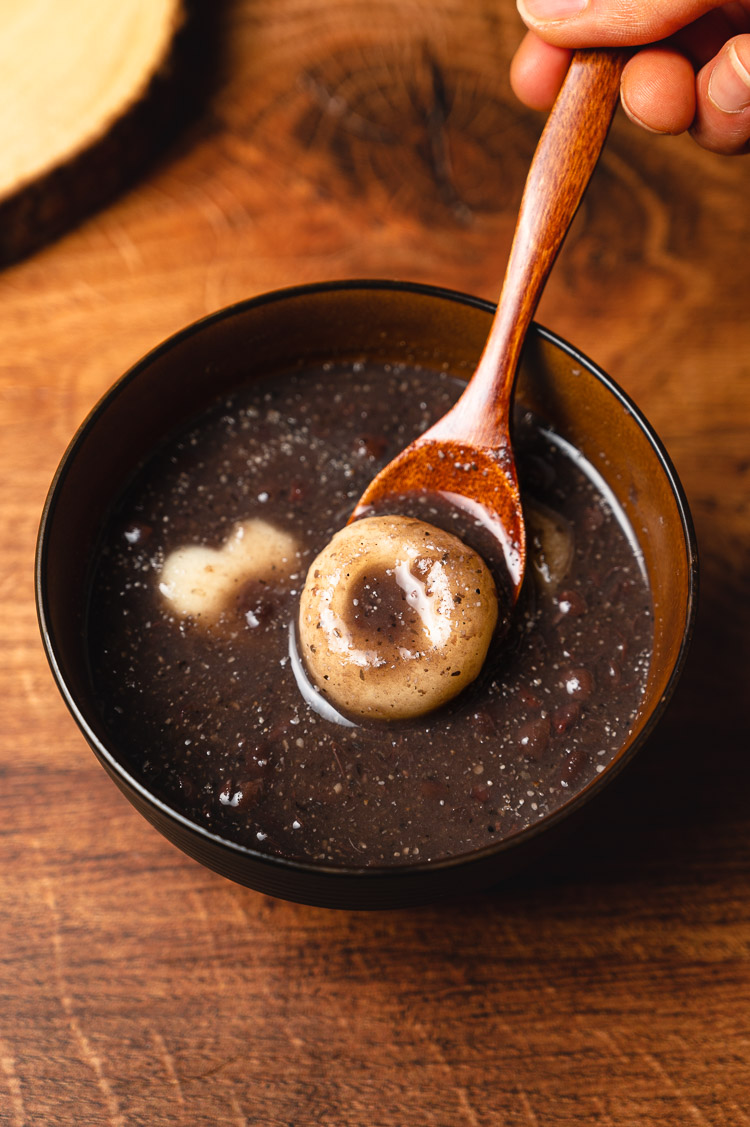


If you try out this black sesame zenzai, don’t forget to leave a comment/rating down below and tag me in your photos on instagram @ellielikes.cooking. I love seeing all of your tasty recreations!
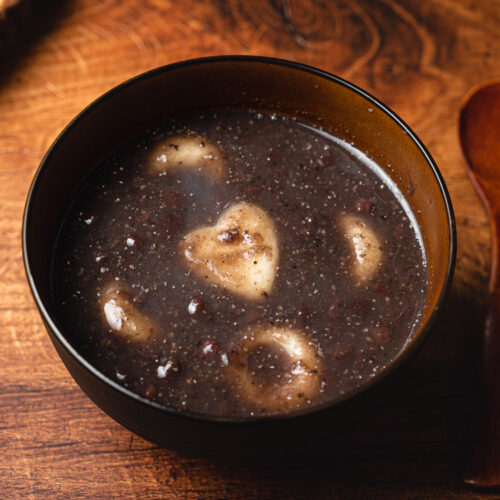
Black Sesame Zenzai (Oshiruko) with Tofu Dango | 豆腐白玉の黒胡麻ぜんざい
Ingredients
Tofu Dango (or use 2 pieces of kirimochi*)
- 75 grams silken tofu
- 50 grams
mochiko* or shiratamako*
Soup
- 1 cup anko (sweet red bean paste)**
- 1 cup water
- 2 tbsp ground black sesame seeds (surigoma)**
- pinch of salt
Instructions
Tofu Dango (skip if using kirimochi)
- Make tofu dango: Add tofu and mochiko to a mixing bowl and use your hands to crumble the tofu into the flour. Keep mixing and pressing the mixture together to form a ball. Roll the ball around your bowl to pick up all the crumbs. Knead until it reaches the texture of an earlobe.
- Shape dango: Pinch off 1-2 tbsp size of dough and roll into a ball. (I was able to make 10 balls.) Gently press down in the center with your index finger to make an indentation. (This helps the mochi cook more evenly.)
- Cook dango: Bring a pot of water to a boil. Add dango (cook in batches if necessary, don't overcrowd the pot). The dango is cooked when it floats to the surface.
- Cool dango: Place dango in ice water to cool and prevent further cooking.
Soup
- For kirimochi: Toast in a toaster oven or regular oven at 450°F until puffed up and golden brown.
- Make soup: Add anko, water, black sesame, and salt to a saucepan and bring to a boil. Adjust consistency as desired – add more water for a thinner soup, or boil for a few minutes to evaporate liquid for a thicker soup.
- Combine: Place dango/mochi in serving bowls and pour hot soup over. Enjoy!
**Notes



*Disclosure: This page may contain affiliate links. As an Amazon Associate I earn from qualifying purchases, but the price remains the same to you. Thank you for supporting Ellie Likes Cooking!
Save for later!
